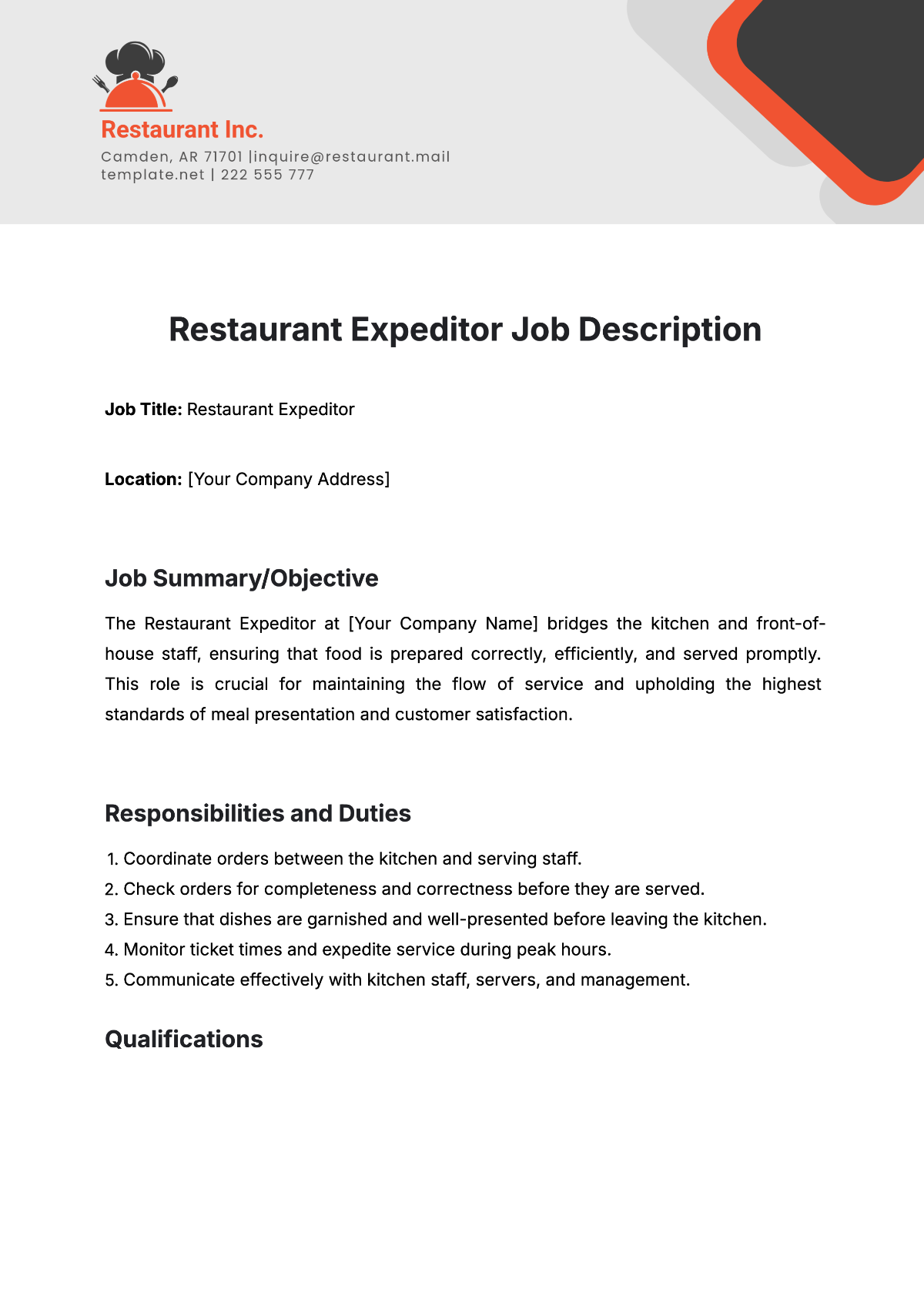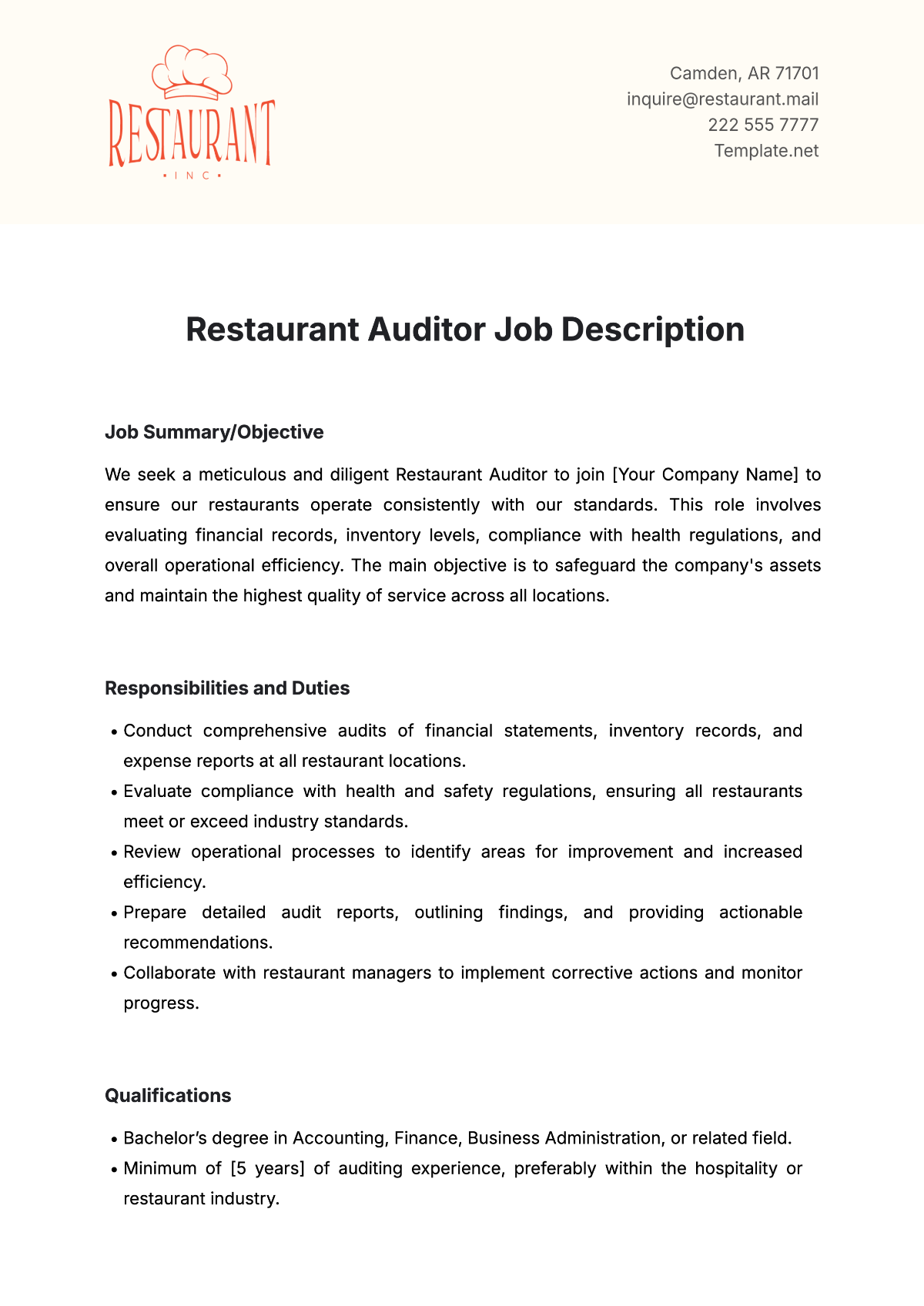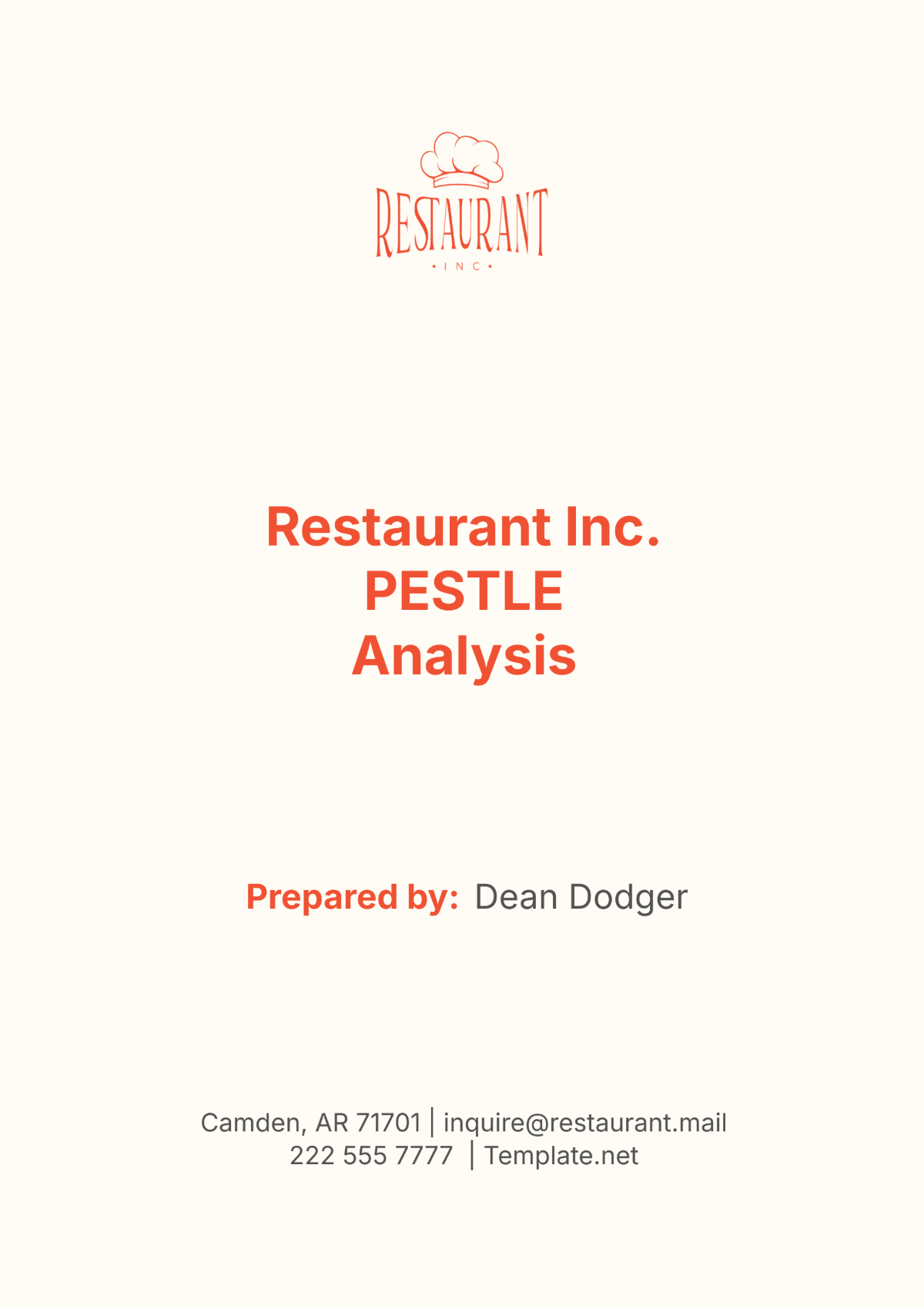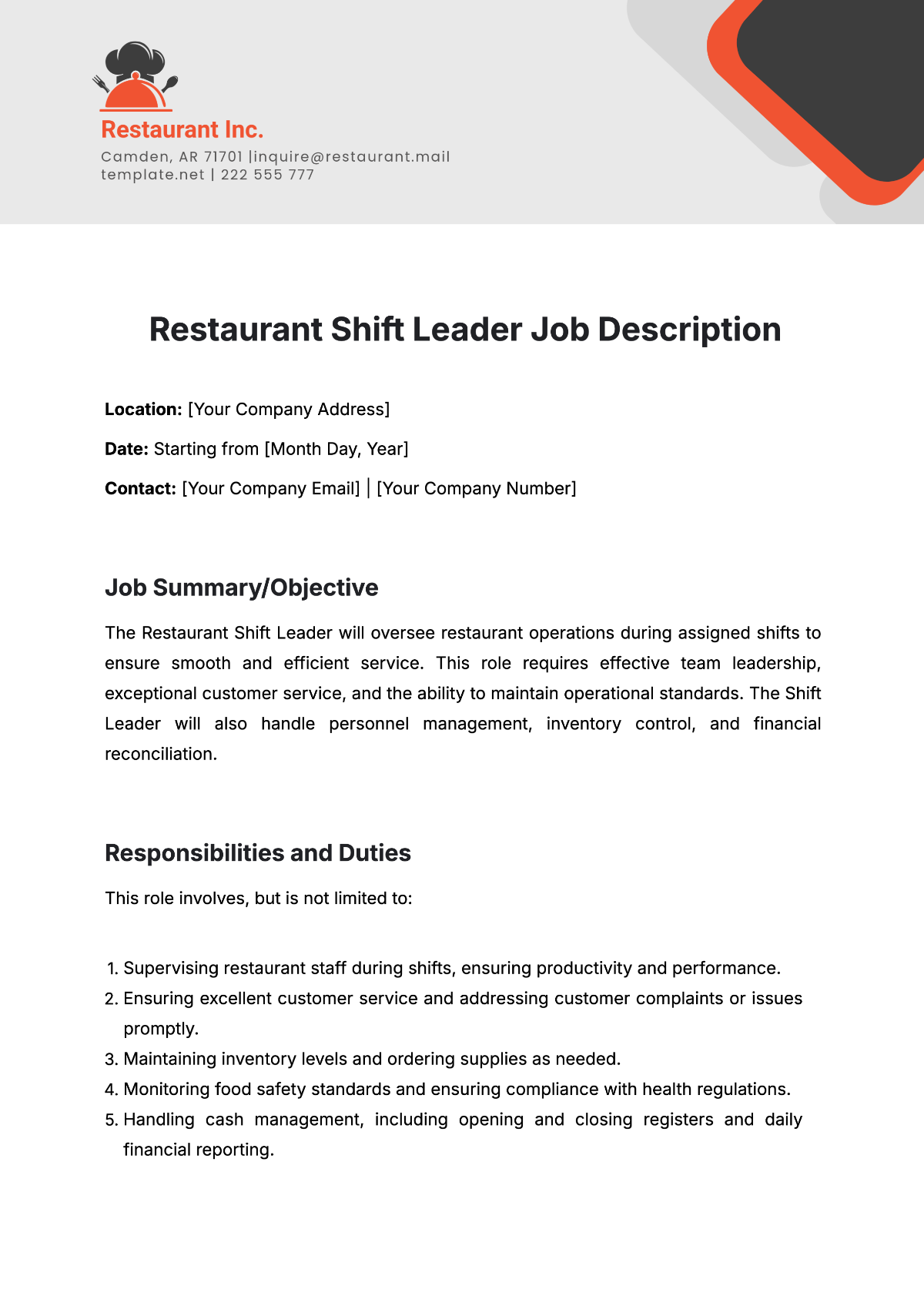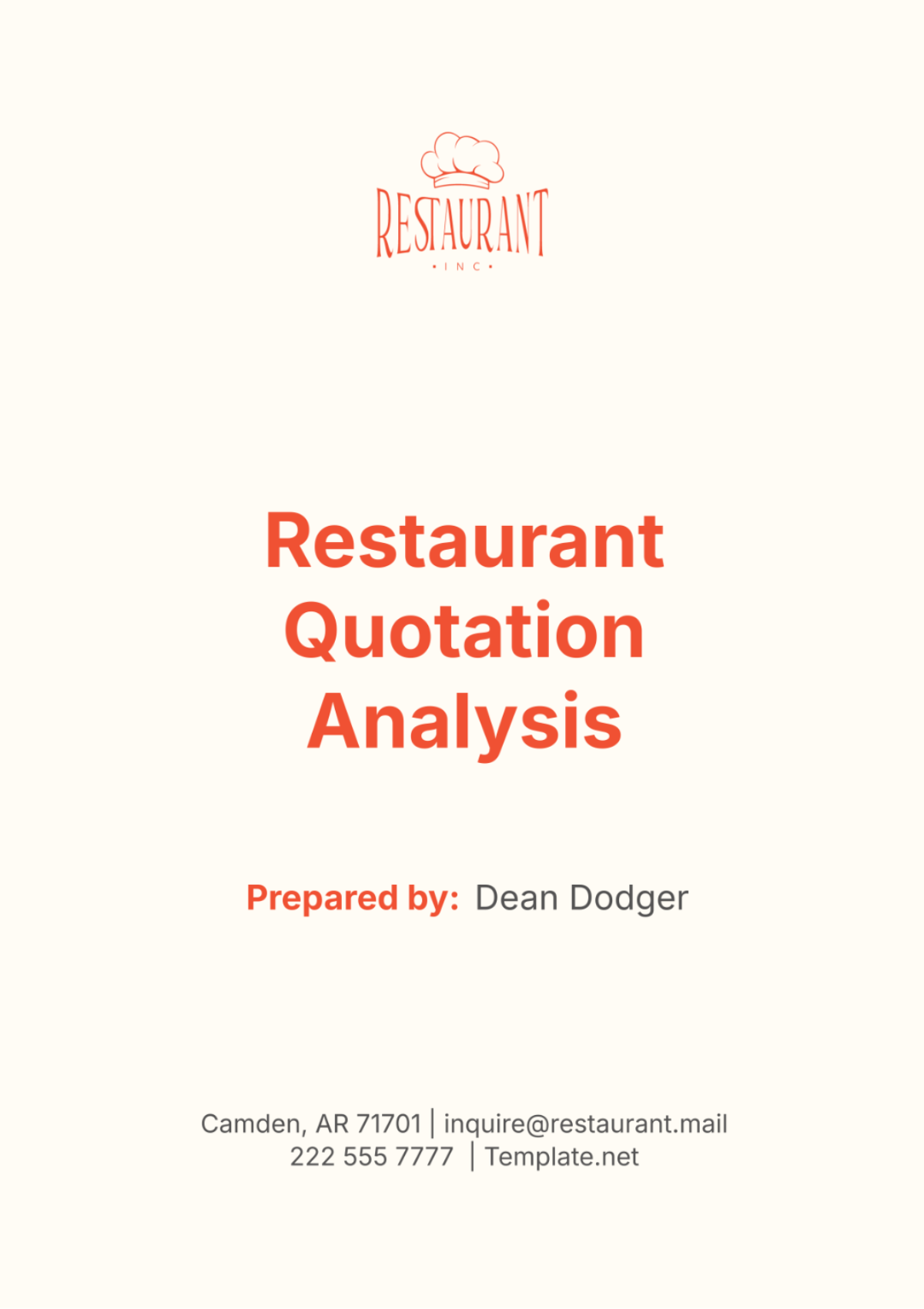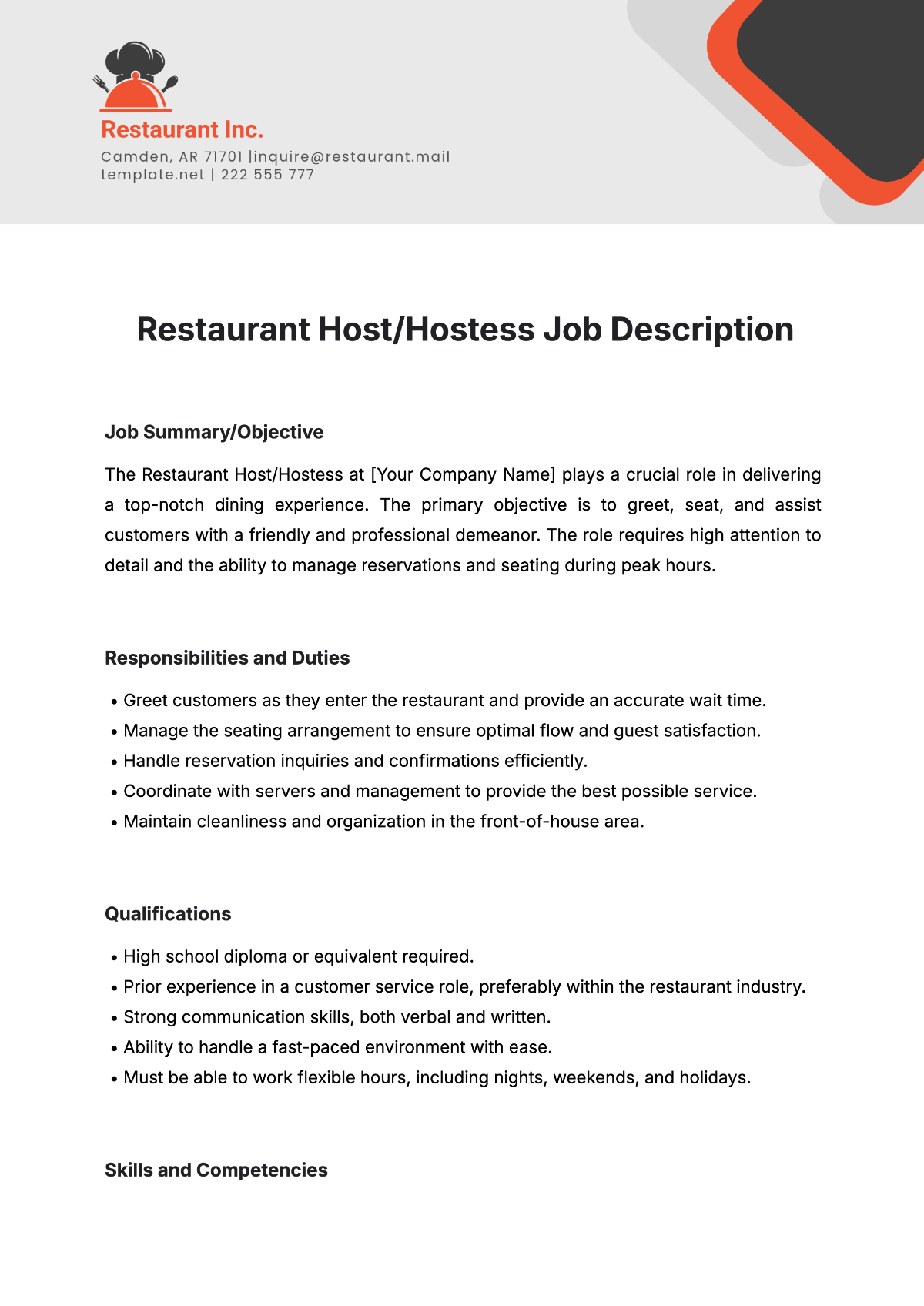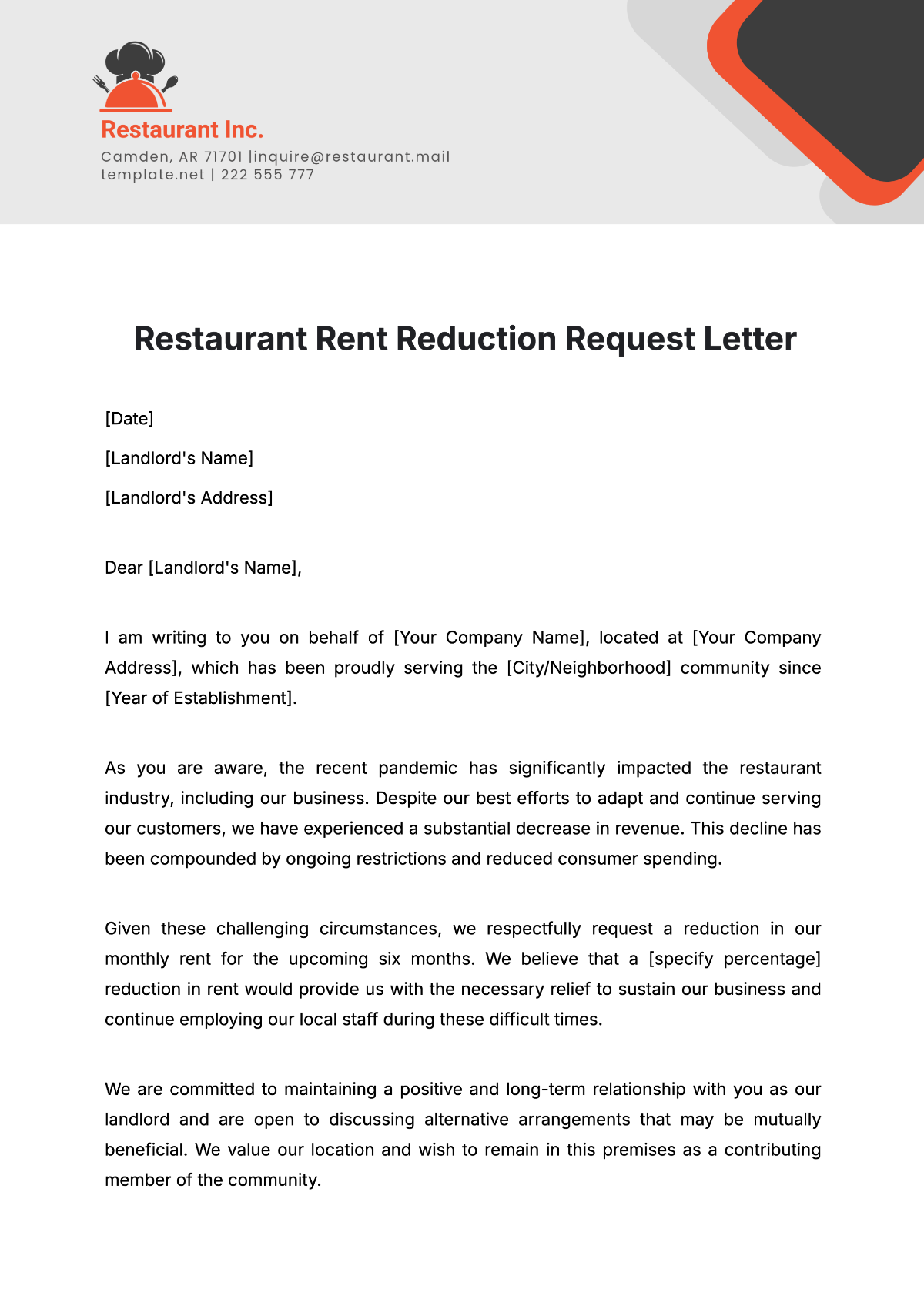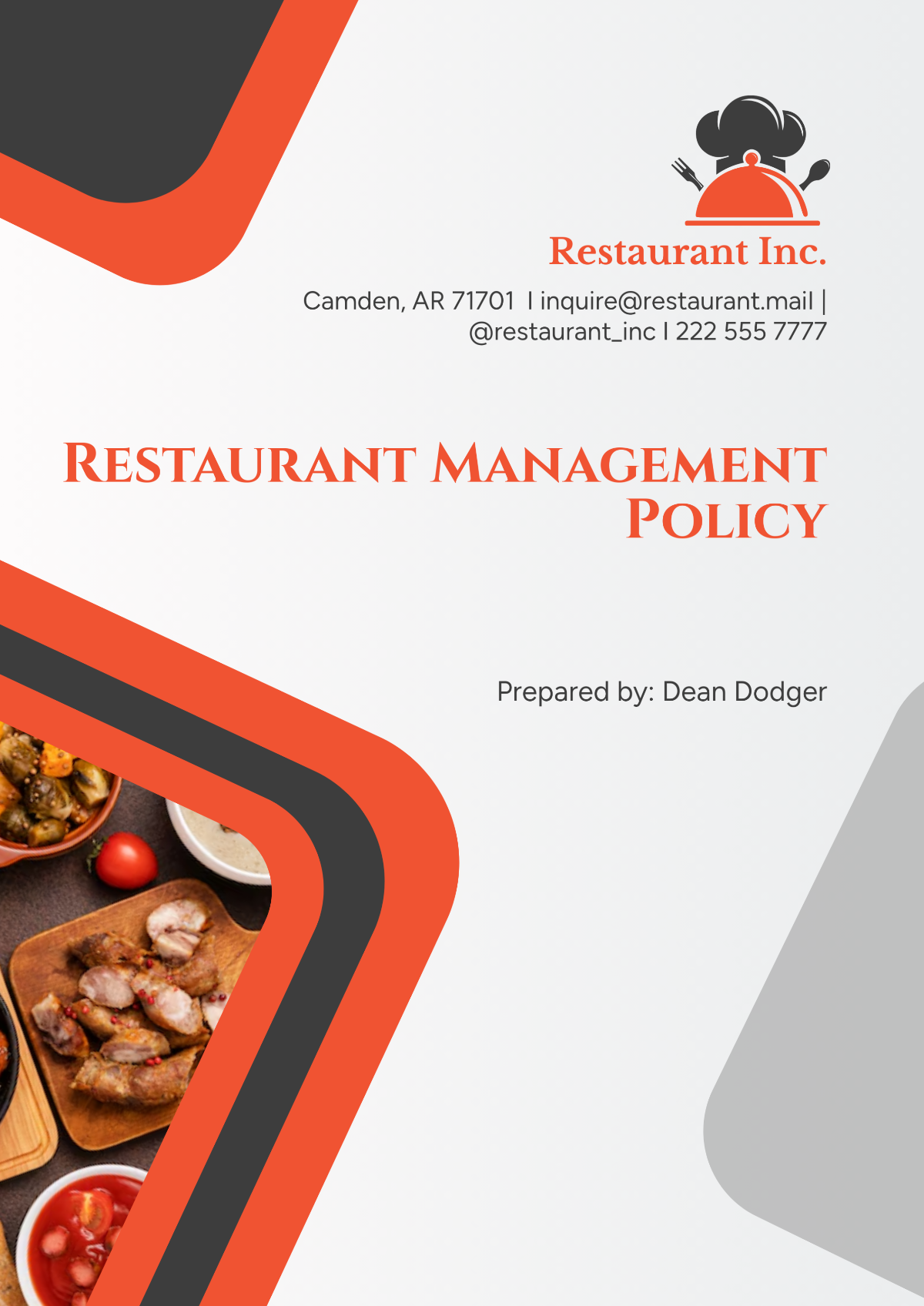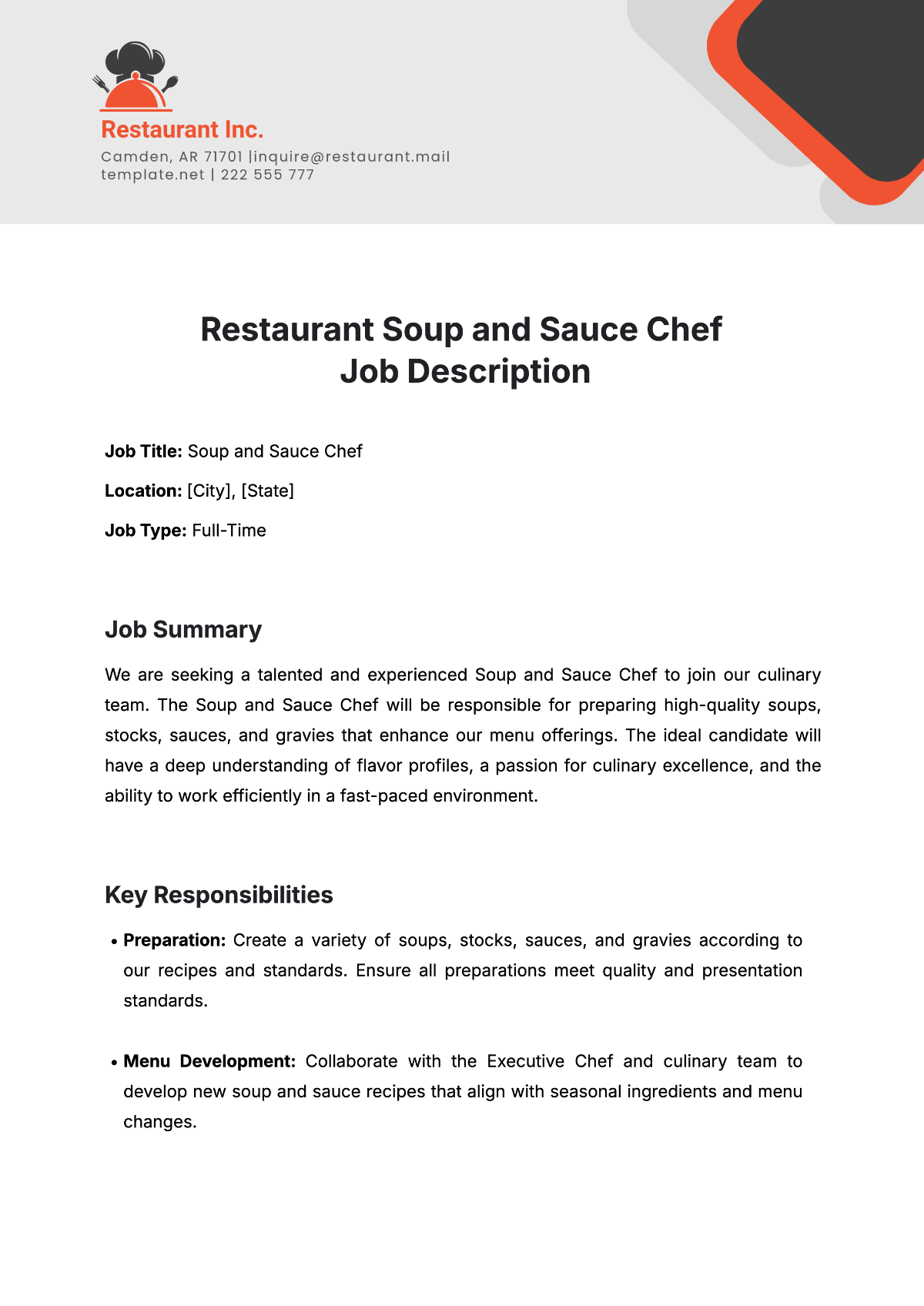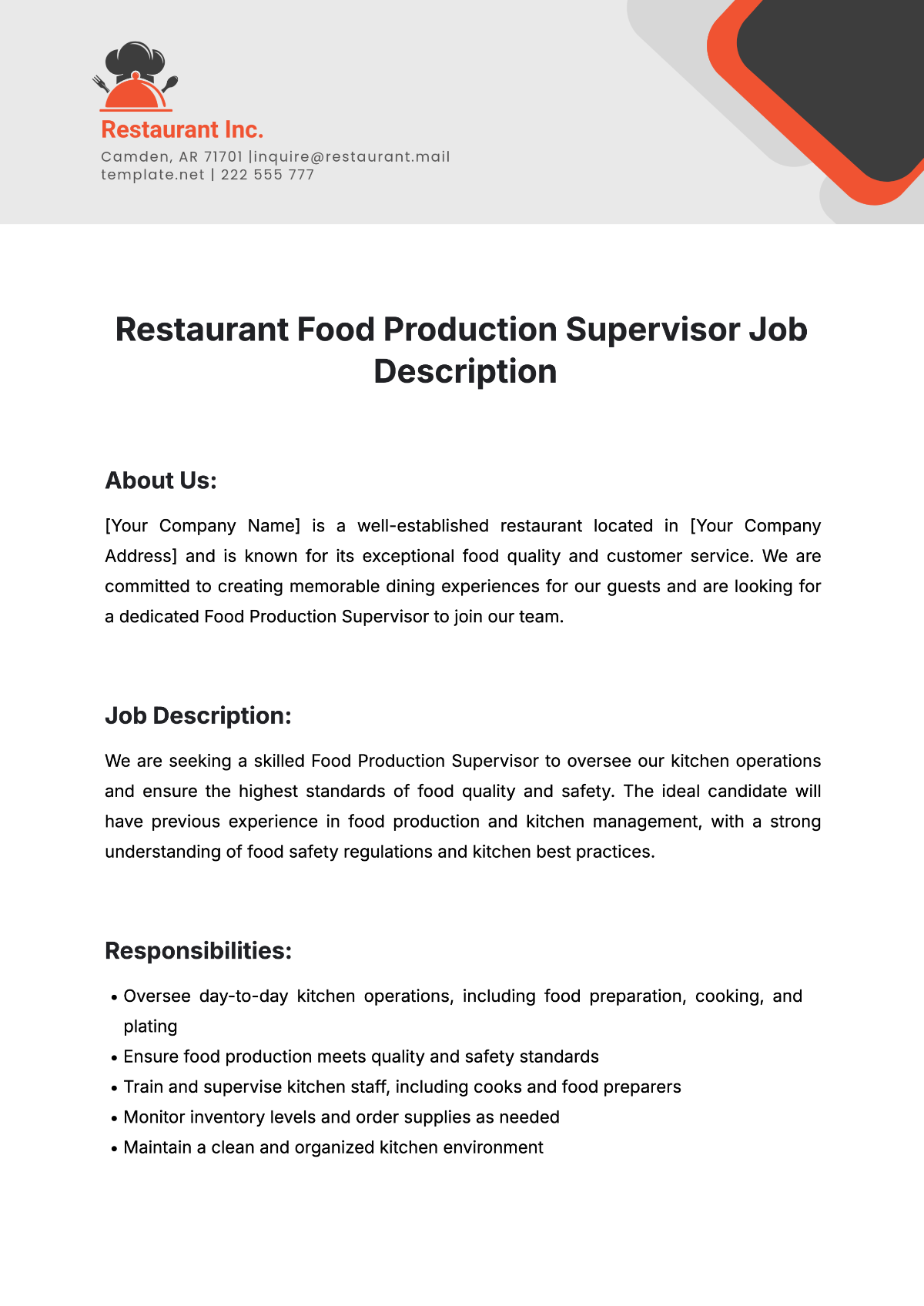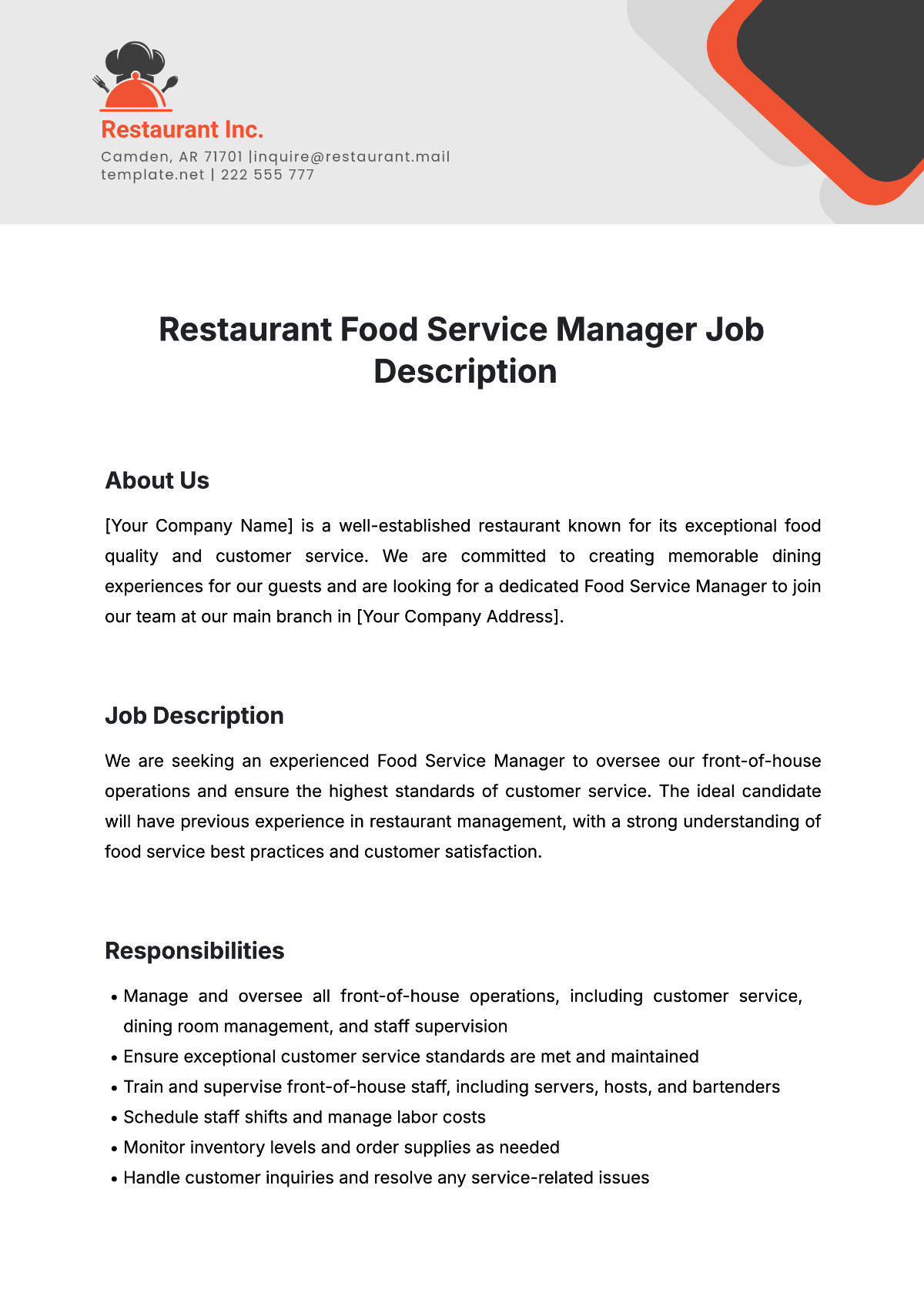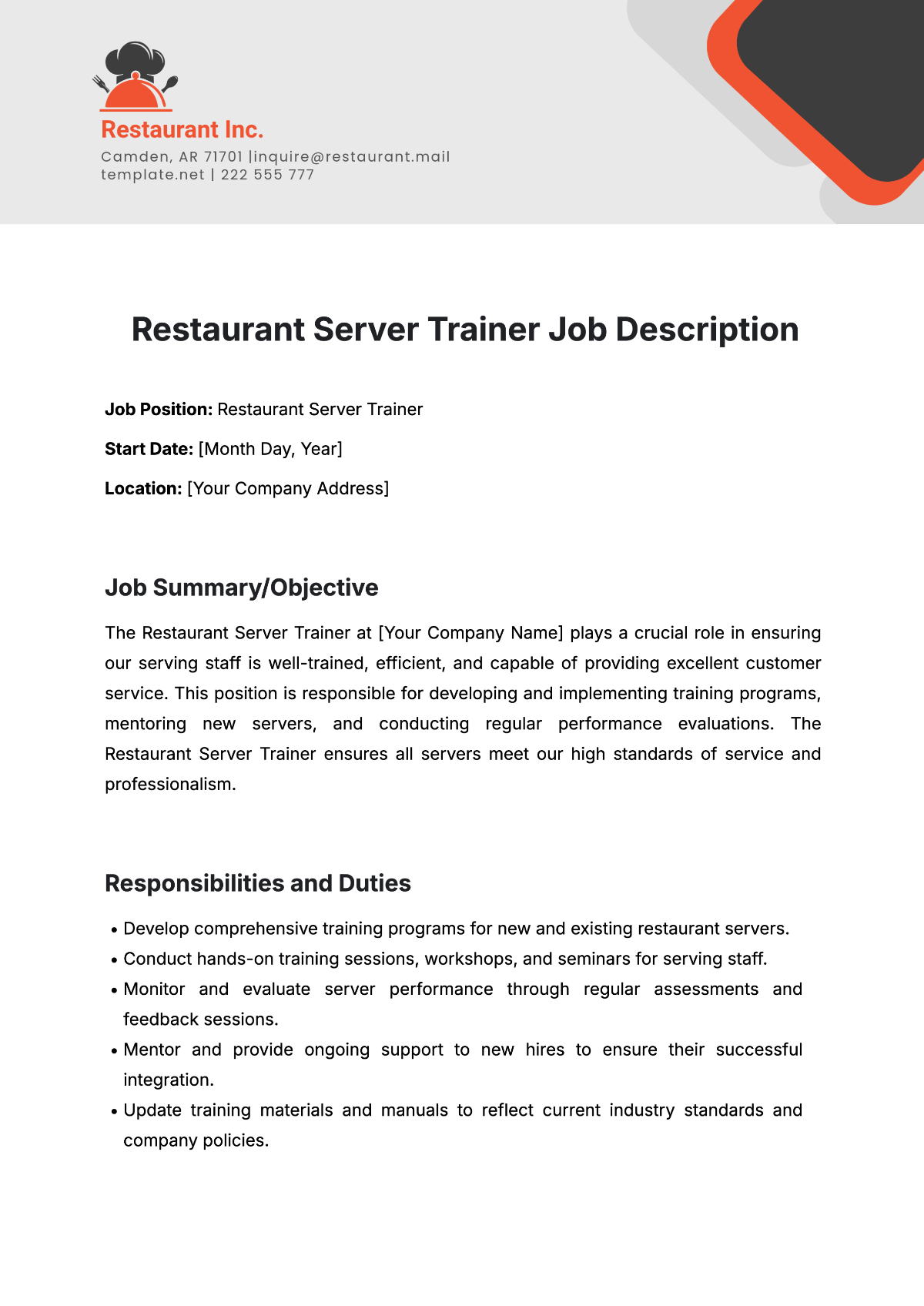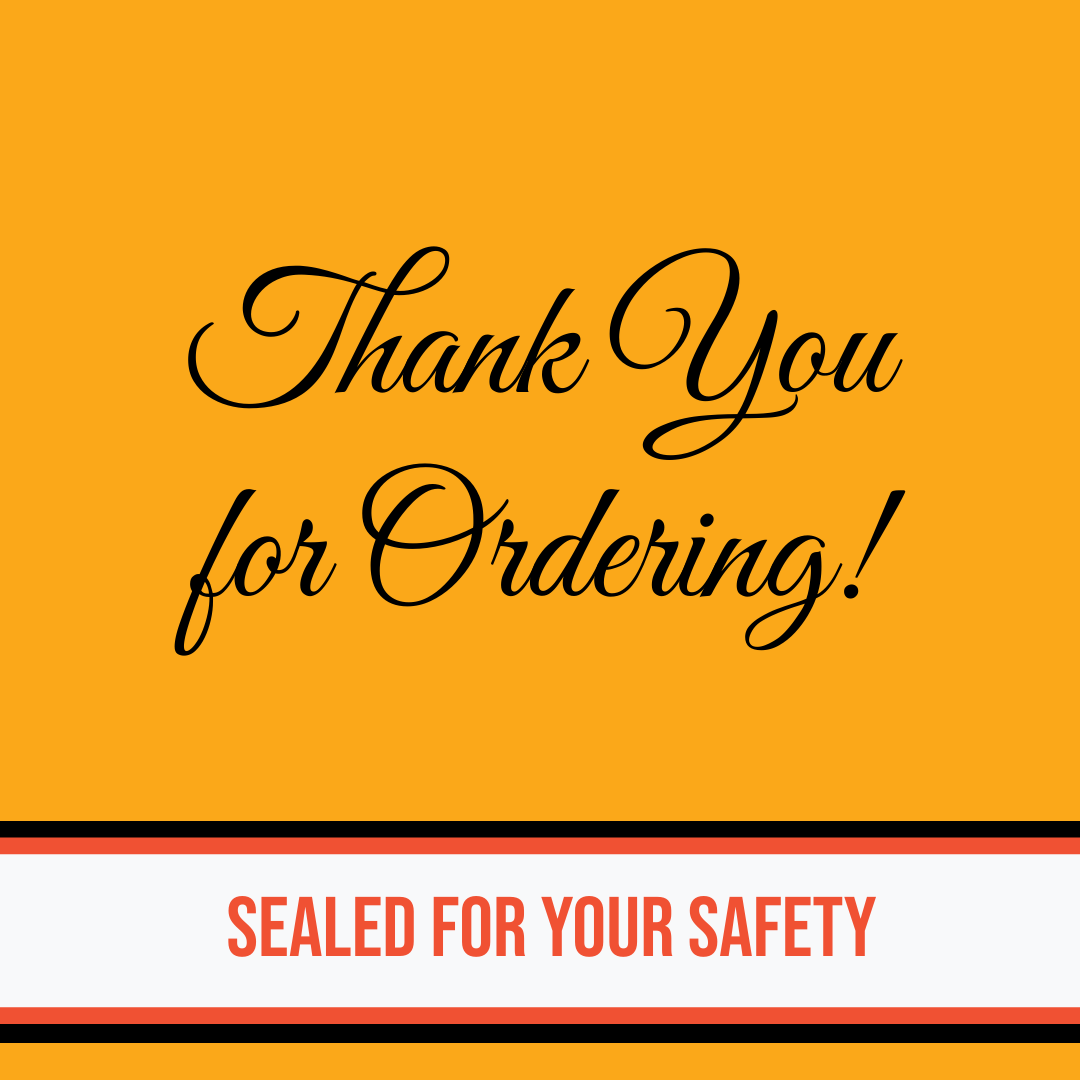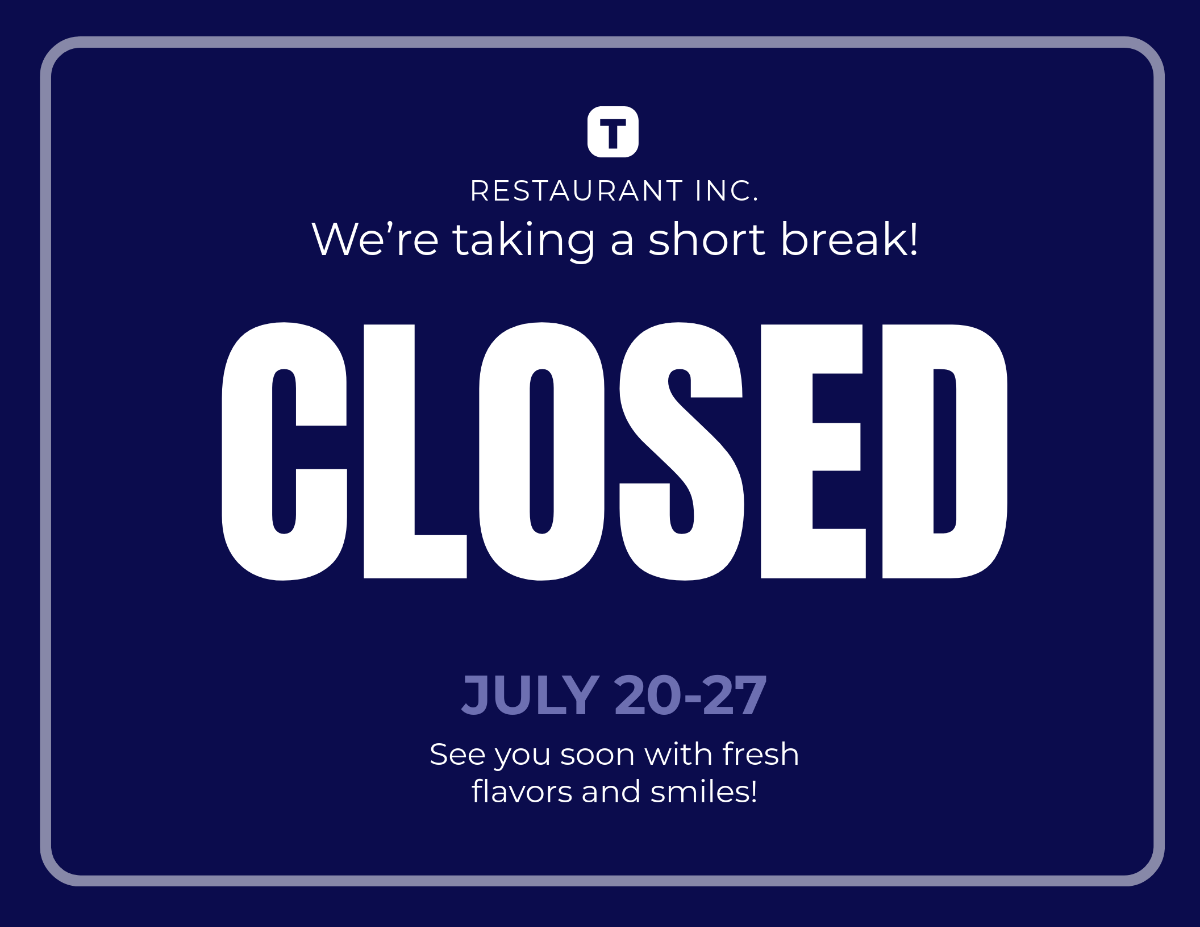I. Introduction
1. Purpose of the Vendor Order Guide
The Vendor Order Guide for [Your Company Name] is designed to streamline the ordering process with our suppliers, ensuring that we consistently receive the highest quality products on time and at competitive prices. This guide serves as a comprehensive manual for managing vendor relationships, placing orders, and maintaining inventory. By adhering to the procedures outlined in this guide, our restaurant can optimize its operations, minimize costs, and deliver exceptional dining experiences to our customers.
2. Importance of Maintaining a Vendor Order Guide
Maintaining a Vendor Order Guide is crucial for several reasons:
Consistency: Ensures that all staff members follow the same procedures, leading to uniformity in order management.
Efficiency: Reduces the time and effort required to place orders and manage inventory.
Cost Control: Helps in negotiating better rates and terms with vendors, thereby controlling food and supply costs.
Quality Assurance: Ensures that only high-quality products that meet our standards are ordered and received.
Compliance: Helps in maintaining compliance with food safety regulations and vendor contracts.
3. Overview of Sections
This guide is divided into several key sections:
Vendor Information: Details about each vendor, including contact information, terms, and performance metrics.
Product Listings: Comprehensive list of products categorized by type, with detailed information about each item.
Ordering Procedures: Step-by-step process for placing orders, including deadlines and confirmation protocols.
Delivery and Receiving: Procedures for handling deliveries, inspecting goods, and managing discrepancies.
Inventory Management: Strategies for tracking and reconciling inventory, and reducing waste.
II. Vendor Information
1. Vendor Contact Details
Maintaining accurate and up-to-date contact information for all vendors is essential. Below is a sample table format to organize vendor contact details:
Vendor Name | Address | Phone Number | Primary Contact Person | |
|---|---|---|---|---|
ABC Produce | [Address] | [Phone Number] | [Email Address] | [Name] |
Fresh Dairy Inc. | [Address] | [Phone Number] | [Email Address] | [Name] |
Ocean Seafood Co. | [Address] | [Phone Number] | [Email Address] | [Name] |
2. Vendor Terms and Conditions
Understanding the terms and conditions set by each vendor helps in managing orders effectively. Key terms to document include:
Payment Terms: Payment terms dictate how and when payments should be made to vendors. Common terms include Net 30, Net 45, and Net 60, which indicate that payment is due 30, 45, or 60 days after the invoice date, respectively.
Delivery Schedule: The regular delivery schedule should be noted to ensure timely receipt of goods. Some vendors may deliver daily, while others may have set days for delivery.
Return Policy: The policy for returning damaged or unsatisfactory goods should be clearly outlined. This includes the timeframe for returns and any conditions that must be met.
3. Vendor Performance Metrics
Regularly evaluating vendor performance ensures that we maintain high standards for quality and service. Performance metrics may include:
Quality of Products: Assessing the quality of goods received in terms of freshness, packaging, and adherence to specifications.
Timeliness of Deliveries: Tracking whether deliveries are made on time as per the agreed schedule.
Customer Service Ratings: Evaluating the responsiveness and helpfulness of vendor representatives.
A sample table for tracking vendor performance metrics:
Vendor Name | Quality of Products (1-5) | Timeliness of Deliveries (1-5) | Customer Service Ratings (1-5) |
|---|---|---|---|
ABC Produce | 5 | 4 | 4 |
Fresh Dairy Inc. | 4 | 5 | 5 |
Ocean Seafood Co. | 3 | 3 | 4 |
III. Product Listings
1. Product Categories
Organizing products into categories helps streamline the ordering process. The main categories include:
Produce: Fresh fruits, vegetables, herbs, etc.
Dairy: Milk, cheese, butter, yogurt, etc.
Meat and Poultry: Beef, pork, chicken, turkey, etc.
Seafood: Fish, shellfish, crustaceans, etc.
Dry Goods: Flour, sugar, rice, pasta, spices, etc.
Beverages: Soft drinks, juices, coffee, tea, etc.
Cleaning Supplies: Detergents, sanitizers, paper towels, etc.
2. Detailed Product Information
For each product, provide detailed information to facilitate accurate ordering. A sample table format for product listings:
Category | Product Name | Description | Unit Size | Pricing | Minimum Order Quantity |
|---|---|---|---|---|---|
Produce | Roma Tomatoes | Fresh, vine-ripened | 10 lbs | $12.50 | 2 |
Dairy | Whole Milk | Pasteurized, Grade A | 1 gallon | $3.00 | 5 |
Meat and Poultry | Chicken Breast | Boneless, skinless | 5 lbs | $15.00 | 1 |
Seafood | Atlantic Salmon | Fresh, skin-on fillets | 2 lbs | $18.00 | 3 |
Dry Goods | All-Purpose Flour | Unbleached, enriched | 50 lbs | $20.00 | 1 |
Beverages | Orange Juice | Freshly squeezed, no pulp | 1 gallon | $5.00 | 4 |
Cleaning Supplies | Dish Detergent | Industrial strength, lemon scent | 1 gallon | $8.00 | 2 |
3. Seasonal and Specialty Items
Some products may only be available seasonally or may be considered specialty items. It is important to note their availability and ordering schedule.
Product Name | Availability Period | Ordering Schedule |
|---|---|---|
Fresh Strawberries | Spring to Early Summer | Weekly during availability |
Pumpkin Puree | Fall | Monthly from September to November |
Truffle Oil | Year-round, limited | Bi-monthly requires advance order |
IV. Ordering Procedures
1. Order Placement Process
There are multiple ways to place orders with vendors. It is important to document the preferred method for each vendor:
Online Ordering System: Many vendors have an online platform where orders can be placed. This method often provides the convenience of 24/7 access and an up-to-date product catalog.
Phone Orders: Placing orders via phone allows for direct communication with vendor representatives. This method is useful for clarifying product details and negotiating terms.
Email Orders: Email orders provide a written record of the order details. It is important to include all necessary information, such as product names, quantities, and delivery dates.
2. Order Deadlines
Meeting order deadlines is crucial to ensure timely delivery. Each vendor may have different cut-off times for order placement:
Vendor Name | Daily Cut-off Time | Advance Order Requirements |
|---|---|---|
ABC Produce | 2:00 PM | 1 day in advance |
Fresh Dairy Inc. | 5:00 PM | 2 days in advance |
Ocean Seafood Co. | 12:00 PM | 3 days in advance |
3. Order Confirmation
After placing an order, it is important to confirm receipt and verify the details:
Receipt of Order: Vendors should send an order confirmation via email or provide a confirmation number for phone orders.
Verification of Order Details: Review the confirmation to ensure all details are correct, including product names, quantities, prices, and delivery dates. Address any discrepancies immediately with the vendor.
V. Delivery and Receiving
1. Delivery Schedule
Knowing the regular delivery schedule helps in planning and preparing for incoming orders:
Vendor Name | Regular Delivery Days | Special Delivery Arrangements |
|---|---|---|
ABC Produce | Monday, Wednesday, Friday | Available upon request |
Fresh Dairy Inc. | Tuesday, Thursday, Saturday | None |
Ocean Seafood Co. | Monday, Thursday | Available with 48-hour notice |
2. Receiving Procedures
Proper receiving procedures ensure that the products received meet our quality standards:
Inspecting Deliveries: Upon receipt, inspect the products for freshness, quality, and correct quantities. Check for any signs of damage or spoilage.
Handling Discrepancies: If there are any discrepancies or issues with the delivery, document them and notify the vendor immediately. Use a discrepancy log to keep track of these issues.
Documentation and Record Keeping: Keep records of all deliveries, including delivery receipts, inspection reports, and discrepancy logs.
3. Storage and Handling
Proper storage and handling of products are essential to maintain quality and prevent spoilage:
Proper Storage Conditions: Store products at the appropriate temperatures and conditions. For example, dairy products should be stored in the refrigerator, while dry goods should be kept in a cool, dry place.
Stock Rotation: Implement a First In, First Out (FIFO) system to ensure that older stock is used before new stock, reducing the risk of spoilage.
VI. Inventory Management
1. Inventory Tracking
Effective inventory tracking is essential for maintaining accurate stock levels and ensuring that we have the necessary supplies to operate smoothly. Implementing a robust inventory tracking system involves:
Recording Deliveries: Upon receiving orders, staff should immediately record the details of each delivery, including the date, vendor, items received, quantities, and any discrepancies.
Monitoring Stock Levels: Regularly monitor inventory levels to ensure that we have adequate supplies of all necessary items. This can be done through daily, weekly, or monthly inventory counts, depending on the item and usage rate.
Inventory Management Software: Utilize inventory management software to automate tracking and provide real-time updates on stock levels. This software can generate reports, track usage patterns, and alert staff when items need to be reordered.
2. Inventory Reconciliation
Regular inventory reconciliation helps in identifying discrepancies between recorded inventory and actual stock. This process involves:
Regular Inventory Audits: Conduct regular physical counts of inventory to verify stock levels. Compare these counts with records from the inventory management system.
Adjusting Orders Based on Inventory Levels: Use the results of inventory audits to adjust future orders. If certain items are consistently overstocked, reduce order quantities. Conversely, if items are frequently understocked, increase order quantities.
Identifying Causes of Discrepancies: Investigate and address any significant discrepancies between recorded and actual inventory. Common causes include errors in recording deliveries, theft, or spoilage.
3. Waste Management
Minimizing waste is crucial for controlling costs and promoting sustainability. Implementing effective waste management strategies includes:
Tracking Waste: Record all instances of waste, including the type and quantity of wasted items and the reason for waste (e.g., spoilage, over-preparation, customer returns).
Implementing Waste Reduction Strategies: Adopt practices to reduce waste, such as accurate portion control, proper storage techniques, and regular rotation of stock to use older items first.
Analyzing Waste Data: Regularly review waste data to identify patterns and areas for improvement. Use this information to refine ordering procedures and reduce future waste.
VII. Vendor Relationship Management
1. Communication Best Practices
Maintaining open and effective communication with vendors is key to building strong relationships and ensuring smooth operations. Best practices for communication include:
Regular Check-ins: Schedule regular check-ins with vendors to discuss performance, address any issues, and review upcoming needs. This can be done via phone calls, emails, or in-person meetings.
Addressing Issues and Concerns: Promptly address any issues or concerns with vendors, such as late deliveries or product quality problems. Clearly communicate expectations and work together to find solutions.
Documentation: Keep detailed records of all communications with vendors, including emails, phone calls, and meeting notes. This helps in tracking discussions and agreements.
2. Performance Reviews
Regularly reviewing vendor performance helps in maintaining high standards and identifying areas for improvement. Performance reviews should include:
Setting Performance Criteria: Establish clear criteria for evaluating vendor performance, such as quality of products, timeliness of deliveries, and responsiveness to issues.
Conducting Regular Reviews: Perform regular performance reviews, such as quarterly or bi-annually, to assess vendor performance against the established criteria. Use a standardized review form to ensure consistency.
Providing Feedback: Share the results of performance reviews with vendors and provide constructive feedback. Recognize good performance and address any areas needing improvement.
3. Contract Negotiations
Regularly reviewing and negotiating vendor contracts helps in securing better terms and maintaining a strong partnership. The contract negotiation process includes:
Reviewing Contract Terms: Periodically review the terms of vendor contracts, including pricing, payment terms, and delivery schedules. Ensure that all terms are clearly documented and agreed upon.
Negotiating Better Rates: Based on performance reviews and market conditions, negotiate better rates or more favorable terms with vendors. Highlight areas where the vendor has excelled and discuss opportunities for improvement.
Renewing Contracts: When renewing contracts, ensure that any changes or updates are clearly documented. Obtain written agreements from both parties to avoid misunderstandings.
VIII. Compliance and Safety
1. Health and Safety Standards
Adhering to health and safety standards is essential for ensuring the well-being of customers and staff. Compliance includes:
Food Safety Regulations: Ensure that all vendors comply with relevant food safety regulations, such as those set by the FDA or local health departments. Require vendors to provide documentation of compliance, such as health inspection reports or certification of food safety training.
Vendor Compliance Requirements: Establish clear compliance requirements for vendors, including proper handling, storage, and transportation of food products. Regularly review these requirements and update them as needed.
2. Record Keeping
Maintaining accurate records is crucial for compliance and operational efficiency. Key records to maintain include:
Order Records: Keep detailed records of all orders placed, including order confirmations, delivery receipts, and invoices. This helps in tracking purchases and managing inventory.
Compliance Documentation: Maintain documentation of vendor compliance with health and safety standards, such as inspection reports and certification records. Ensure that these documents are up-to-date and easily accessible.
Inventory Records: Keep detailed inventory records, including delivery logs, inventory counts, and waste records. Regularly review these records to ensure accuracy and compliance.
3. Audit Procedures
Regular audits help in maintaining compliance and identifying areas for improvement. The audit process includes:
Internal Audits: Conduct regular internal audits of inventory, ordering procedures, and compliance documentation. Use standardized audit checklists to ensure consistency and thoroughness.
External Audits: Periodically engage third-party auditors to review compliance with health and safety standards. Address any findings or recommendations promptly to maintain compliance.
Continuous Improvement: Use the results of audits to identify areas for improvement and implement changes to enhance operational efficiency and compliance.
IX. Troubleshooting and Problem Resolution
1. Common Issues and Solutions
Addressing common issues promptly helps in maintaining smooth operations and strong vendor relationships. Common issues and solutions include:
Late Deliveries: If deliveries are consistently late, discuss the issue with the vendor and review the delivery schedule. Consider adjusting order times or finding alternative delivery arrangements.
Product Quality Issues: If product quality does not meet expectations, document the issues and provide feedback to the vendor. Request replacement or credit for substandard products.
Pricing Discrepancies: If there are discrepancies between quoted prices and invoiced amounts, review the contract terms and discuss the issue with the vendor. Ensure that all pricing agreements are clearly documented.
2. Escalation Procedures
When issues cannot be resolved at the operational level, escalate them to higher authorities. The escalation process includes:
Identifying When to Escalate: Determine when an issue requires escalation, such as repeated late deliveries or unresolved quality issues. Establish clear criteria for escalation.
Contacting Higher Authorities: Escalate the issue to higher authorities within the vendor organization, such as a sales manager or account executive. Clearly communicate the issue and provide supporting documentation.
Documenting Escalation: Keep detailed records of all escalations, including the issue, steps taken to resolve it, and the outcome. Use this information to track and manage ongoing issues.
3. Contingency Plans
Having contingency plans in place helps in managing emergencies and ensuring continuity of operations. Contingency plans include:
Alternative Vendors: Identify and establish relationships with alternative vendors who can supply critical items in case of disruptions. Maintain a list of backup vendors and their contact details.
Emergency Orders: Develop procedures for placing emergency orders, including expedited delivery arrangements and approval processes. Ensure that staff are trained on these procedures.
Risk Management: Regularly review and update contingency plans to address new risks and challenges. Conduct training and drills to ensure that staff are prepared to implement these plans.
X. Technology and Tools
1. Inventory Management Software
Using inventory management software helps in automating and streamlining inventory tracking and ordering processes. Key features of inventory management software include:
Real-Time Updates: Provides real-time updates on inventory levels, allowing staff to monitor stock and identify when items need to be reordered.
Automated Reordering: Automatically generates reorder alerts or purchase orders based on predefined stock levels, reducing the risk of stockouts.
Reporting and Analytics: Generate detailed reports and analytics on inventory usage, order history, and vendor performance, helping in making informed decisions.
2. Communication Platforms
Effective communication platforms help in managing vendor relationships and ensuring smooth operations. Key communication tools include:
Email and Messaging Apps: Use email and messaging apps for regular communication with vendors, including order placement, confirmations, and issue resolution. Ensure that all communications are documented.
Video Conferencing: Use video conferencing tools for regular check-ins and performance reviews with vendors. This helps in building strong relationships and addressing issues promptly.
Collaboration Tools: Use collaboration tools, such as shared documents and project management software, to coordinate with vendors and manage tasks related to ordering and inventory management.
3. Data Security
Ensuring the security of data related to vendor management and inventory is crucial for protecting sensitive information. Key data security measures include:
Access Controls: Implement access controls to restrict access to inventory management systems and vendor information to authorized personnel only.
Data Encryption: Use data encryption to protect sensitive information, such as vendor contracts and pricing agreements, during transmission and storage.
Regular Backups: Regularly back up all data related to vendor management and inventory to prevent loss due to system failures or cyber-attacks.
XI. Continuous Improvement
1. Monitoring and Evaluation
Regularly monitoring and evaluating vendor management processes helps in identifying areas for improvement. Key activities include:
Performance Tracking: Continuously track and evaluate vendor performance using established metrics. Use this data to identify trends and areas for improvement.
Process Reviews: Regularly review ordering and inventory management processes to identify inefficiencies and opportunities for improvement. Use feedback from staff and vendors to refine these processes.
Benchmarking: Compare performance metrics and processes against industry benchmarks to identify best practices and areas for improvement.
2. Staff Training
Ongoing staff training ensures that all team members are knowledgeable about vendor management procedures and best practices. Training activities include:
Initial Training: Provide comprehensive training for new staff on vendor management procedures, including order placement, receiving, and inventory tracking.
Ongoing Training: Offer regular refresher training and updates on new procedures, tools, or technologies. Use workshops, webinars, or on-the-job training to keep staff informed.
Performance Reviews: Regularly review staff performance and provide feedback and coaching to ensure adherence to vendor management procedures.
3. Feedback Mechanisms
Implementing feedback mechanisms helps in gathering input from staff and vendors on vendor management processes. Key feedback mechanisms include:
Surveys and Questionnaires: Use surveys and questionnaires to gather feedback from staff and vendors on their experiences with vendor management processes. Use this feedback to identify areas for improvement.
Suggestion Boxes: Provide suggestion boxes or online platforms for staff and vendors to submit ideas and feedback anonymously. Regularly review and act on these suggestions.
Regular Meetings: Hold regular meetings with staff and vendors to discuss feedback and address any concerns. Use these meetings to foster open communication and continuous improvement.







